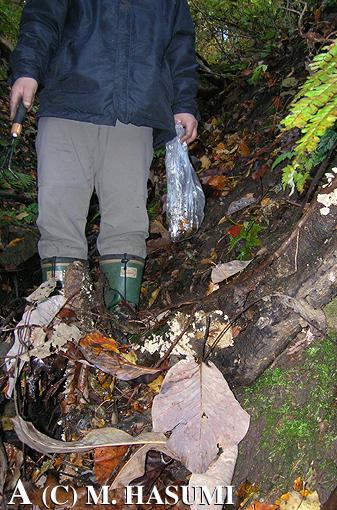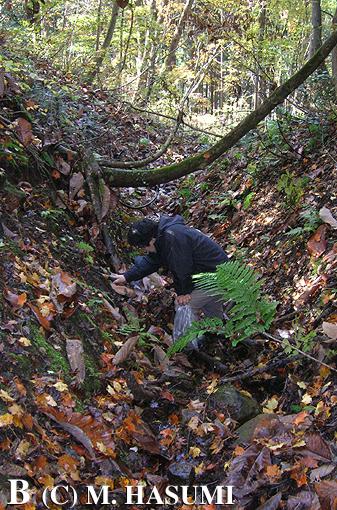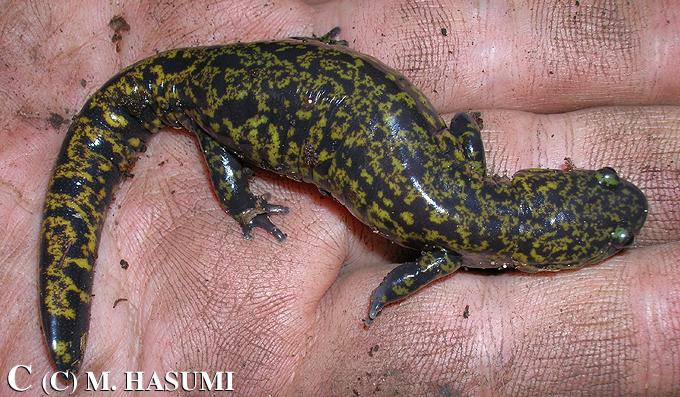


 |  |
 | |
(A) A slope of the left bank of the torrent with angle ranges of 50-70 degrees. A scale-man that stood in the left side of this photograph was M. Kakegawa.
(B) Gross appearance of slopes of the right and left banks (while looking downstream). Male and female immigrants of H. kimurae moved in and out of the water many times, a behavior termed "wandering" (Pimentel, 1960), after their initial entry by the use of these slopes, as well as those of H. lichenatus.
(C) A male immigrant toward the torrent, which was hidden under a decaying log above ground on land near the edge of the forest floor. This male possessed four toes on both hindlimbs.
Accompanied Research Collaborators: Masaichi Kakegawa (Tokyo Metropolitan Komatsugawa Senior High School) and Fujio Kishi (Shirouma Association of Naturalists).
Pimentel, R. A. 1960. Inter- and intrahabitat movements of the rough-skinned newt, Taricha torosa granulosa (Skilton). American Midland Naturalist 63: 470-496.